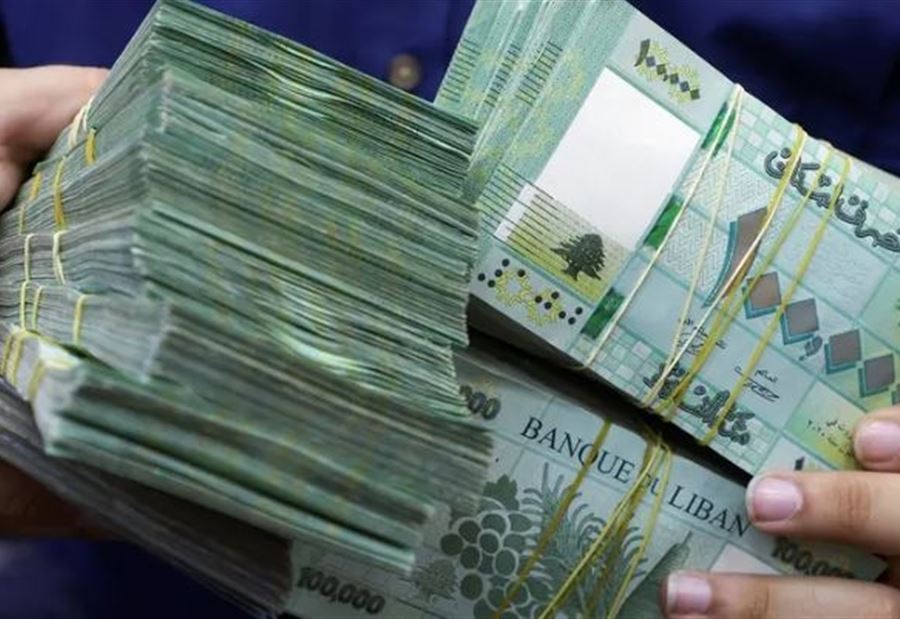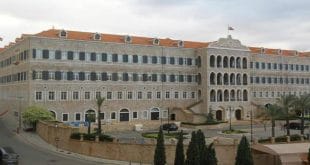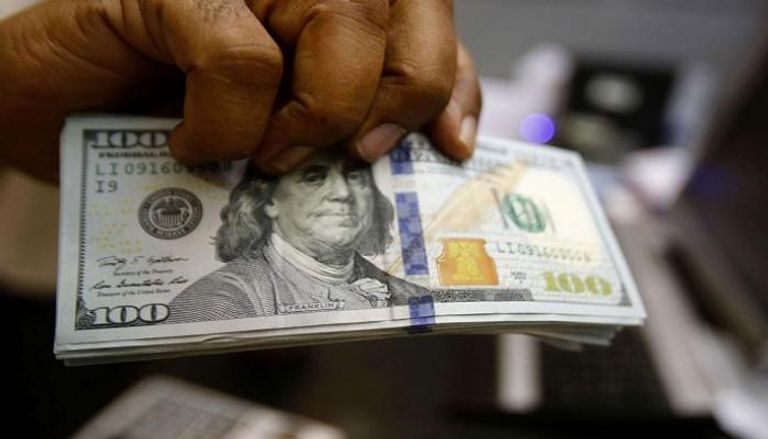انطلقت عجلة القروض السكنية في لبنان من جديد، بعد توقف استمرّ أكثر من خمس سنوات، بفعل الأزمة المالية والمصرفية وغياب التمويل الذي كان يؤمّنه البنك المركزي. وأبلغ المدير العام لمصرف «الإسكان» ورئيس مجلس إدارته أنطوان حبيب، رئيس مجلس النواب نبيه بري، أن المصرف «بصدد التحضير لإطلاق قرض جديد بالليرة اللبنانية سيجري إعلانه قريباً، وهو مخصص للترميم من أجل مساعدة أصحاب الدخل المحدود والمتوسط في ترميم منازلهم وحثهم على البقاء في قراهم ومدنهم».
وأثنى بري على «الجهود التي يبذلها مصرف (الإسكان) في سبيل دعم اللبنانيين في ظل الظروف الصعبة التي تمر بها البلاد».
صعوبات محتملة
ويُفترض أن توفّر هذه القروض متنفساً لأصحاب الدخل المحدود، إلا أنها قد تصطدم بصعوبات تحول دون تحقيقها، إذ دعا مصدر مالي ونقدي إلى «عدم الإفراط بالتفاؤل حيال هذا المشروع الذي يحتاج إلى دراسة دقيقة قبل إطلاقه».
وأوضح المصدر لـ«الشرق الأوسط» أن «التمويل بالليرة اللبنانية يُفترض أن يأتي من البنك المركزي، وليس مضموناً أن يُقدم الأخير على التمويل بالليرة، لأن ذلك يتطلّب ضخ كتلة نقدية كبيرة في السوق، ما سيؤثر سلباً وبصفة سريعة على الاستقرار النقدي الهشّ، ويؤدي إلى ارتفاع جنوني في سعر الدولار الأميركي، خصوصاً أن لبنان لا يزال في دائرة الخطر النقدي»، مشدداً على أن هذا القرض «يجب أن يكون مدرجاً من ضمن الموازنة العامة، فإذا كانت موازنة لبنان السنوية بحدود الـ3.3 مليار دولار، يجب ألا يتعدى الإنفاق هذه القيمة حتى لا نعود إلى المأزق».
مدير «الإسكان» يُطمئن
ولتبديد هذه الهواجس، طمأن المدير العام لمصرف «الإسكان» أنطوان حبيب، قائلاً إن «تمويل هذه القروض لن يؤثر في قيمة الليرة اللبنانية». وأكد لـ«الشرق الأوسط» أن المصرف «سيموّل هذا المشروع من أمواله الخاصة، وليس من أي مصدر آخر، إذ إن المصرف لديه حسابات مالية بالعملة الوطنية قادرة على إمداد الراغبين بالحصول على القروض إذا استوفت ملفاتهم الشروط المطلوبة»، لافتاً إلى أن «كل طالب قرض سيحصل على مبلغ ملياري ليرة لبنانية (ما يقارب 22.500 دولار أميركي)».
وعلى الرغم من حاجة السواد الأعظم من اللبنانيين إلى القروض المدعومة، التي توفّر لهم فرص تحسين أوضاعهم الاجتماعية والمعيشية، شكّكت مصادر مطلعة على أجواء البنك المركزي بـ«قدرة مصرف الإسكان على تمويل القروض من أمواله الخاصة، وقد يضطر الأخير إلى الطلب من البنك المركزي توفير الأموال للاستمرار بالمشروع». وأشارت المصادر لـ«الشرق الأوسط» إلى أن «قيمة الأموال الموجودة في السوق حالياً تُقدّر بحدود 62 ألف مليار ليرة، أي ما يوازي 660 مليون دولار»، مشيرة إلى أن «تمويل القرض المشار إليه بالليرة يعني حكماً ضخ كتلة ضخمة من الليرة، ما ينذر بخطر ارتفاع الدولار بصورة سريعة ومن دون ضوابط».
مصير القرض العربي
وسألت المصادر: «أين القرض العربي الذي حصل عليه مصرف (الإسكان) من (الصندوق الكويتي) وقيمته 50 مليون دينار كويتي (نحو 165 مليون دولار)؟ لماذا التأخير في وضعه موضع التنفيذ ليستفيد منه أصحاب الدخل المحدود؟». وشدّدت على أن «إعطاء القرض بالدولار أو بالعملة الصعبة يُبقي قيمة صرف الليرة تحت السيطرة. أما استسهال إغراق السوق بالعملة الوطنية فله محاذير تجعل الأمور خارج السيطرة».
وذكرت المصادر إياها أن «السياسة التي اعتمدها حاكم مصرف لبنان بالإنابة الدكتور وسيم منصوري، التي أفضت إلى سحب الكتلة المالية الكبيرة بالليرة من السوق، استغرقت أشهراً طويلة وترافقت مع التوقف نهائياً عن طباعة الليرة، ما أدّى إلى لجم الدولار، وهذه مسألة لا يمكن التفريط بها».
24 ألف طلب
واستغرب المدير العام لمصرف «الإسكان» التشكيك بمصير القرض العربي، وكشف أن هذا القرض «وضع قيد التنفيذ، وبدأ المصرف تلقي طلبات الحصول على قرض منذ وقت طويل»، لافتاً إلى أن «هناك 24 ألف طلب حتى الآن». ولفت حبيب إلى أن المصرف «سيمنح قرضاً بقيمة 50 ألف دولار حداً أقصى لأصحاب الدخل المتوسط، و40 ألف دولار لأصحاب الدخل المحدود، وهذه الأموال ستُخصّص لشراء منزل أو بنائه، أما القرض المخصص بالليرة اللبنانية فهو لترميم المنزل».
ووفّرت الدولة اللبنانية على مدى 20 عاماً أكثر من 138 ألف قرض سكني مدعوم، سواء من «المؤسسة العامة للإسكان» أو مصرف «الإسكان»، إلا أن هذه القروض بدأت تتراجع إلى حد كبير في الفصل الأخير من عام 2018، وتوقفت نهائياً منتصف عام 2019 من جراء الأزمة الاقتصادية والمالية والانكماش الذي أدى إلى الانهيار الكبير، وخسارة الليرة اللبنانية 92 في المائة من قيمتها.
المصدر: يوسف دياب – الشرق الأوسط
**New Loans in Lebanese Pounds: Are There Risks for the Market?**
The wheel of housing loans in Lebanon has started moving again, after a hiatus of over five years due to the financial and banking crisis and the absence of funding previously provided by the central bank. The General Manager of the Housing Bank, Antoine Habib, informed the Speaker of the Parliament, Nabih Berri, that the bank is “preparing to launch a new loan in Lebanese pounds, which will be announced soon, aimed at renovation to help low and middle-income individuals renovate their homes and encourage them to stay in their villages and cities.”
Berri praised the “efforts made by the Housing Bank to support Lebanese people amid the difficult conditions the country is facing.”
**Potential Challenges**
These loans are expected to provide relief to low-income individuals; however, they may face challenges that could hinder their success. A financial and monetary source advised against “excessive optimism about this project, which requires thorough study before its launch.”
The source explained to “Asharq Al-Awsat” that “the financing in Lebanese pounds is expected to come from the central bank, and it is not guaranteed that the latter will provide the funding in pounds. This requires injecting a large amount of cash into the market, which could negatively and rapidly affect the fragile monetary stability, leading to a surge in the US dollar exchange rate, especially since Lebanon remains in monetary danger.” The source emphasized that this loan “should be included in the general budget; if Lebanon's annual budget is around $3.3 billion, expenditures should not exceed this amount to avoid falling back into a crisis.”
**Housing Bank's Reassurance**
To alleviate these concerns, Housing Bank General Manager Antoine Habib reassured that “the financing of these loans will not affect the value of the Lebanese pound.” He confirmed to “Asharq Al-Awsat” that the bank “will fund this project from its own funds, not from any other source. The bank has financial accounts in the national currency capable of providing loans to those who meet the required conditions,” noting that “each loan applicant will receive two billion Lebanese pounds (approximately $22,500).”
Despite the widespread need among Lebanese for subsidized loans that provide opportunities to improve their social and living conditions, sources familiar with the central bank's situation doubted the Housing Bank's ability to finance loans from its own funds, suggesting that the bank might need to request funds from the central bank to continue the project. The sources pointed out to “Asharq Al-Awsat” that “the current value of money in the market is estimated at around 62 trillion pounds, equivalent to $660 million,” indicating that “financing the mentioned loan in pounds means injecting a large amount of pounds, which threatens a rapid and uncontrolled rise in the dollar.”
**The Fate of the Arab Loan**
The sources questioned: “Where is the Arab loan obtained by the Housing Bank from the Kuwaiti Fund, worth 50 million Kuwaiti dinars (about $165 million)? Why the delay in implementing it to benefit low-income individuals?” They stressed that “providing the loan in dollars or hard currency keeps the exchange value of the pound under control. On the other hand, flooding the market with national currency has pitfalls that could make the situation uncontrollable.”
The sources also noted that “the policy adopted by the acting governor of the Lebanese Central Bank, Dr. Wassim Mansouri, which led to withdrawing a large amount of pounds from the market, took months and involved a complete halt to printing pounds, resulting in curbing the dollar. This is a matter that cannot be compromised.”
**24,000 Applications**
The General Manager of the Housing Bank expressed surprise at the skepticism regarding the Arab loan and revealed that the loan “is being implemented, and the bank has been receiving loan applications for a long time,” noting that “there are currently 24,000 applications.” Habib pointed out that the bank “will grant a maximum loan of $50,000 for middle-income individuals and $40,000 for low-income individuals. These funds will be allocated for purchasing or building a home, while the loan in Lebanese pounds is for home renovation.”
Over the past 20 years, the Lebanese state has provided more than 138,000 subsidized housing loans, either from the General Housing Corporation or the Housing Bank. However, these loans began to decline significantly in the last quarter of 2018 and ceased entirely by mid-2019 due to the economic and financial crisis and the severe devaluation of the Lebanese pound, which lost 92% of its value.
translated by economyscopes team
 سكوبات عالمية إقتصادية – EconomyScopes إجعل موقعنا خيارك ومصدرك الأنسب للأخبار الإقتصادية المحلية والعربية والعالمية على أنواعها بالإضافة الى نشر مجموعة لا بأس بها من فرص العمل في لبنان والشرق الأوسط والعالم
سكوبات عالمية إقتصادية – EconomyScopes إجعل موقعنا خيارك ومصدرك الأنسب للأخبار الإقتصادية المحلية والعربية والعالمية على أنواعها بالإضافة الى نشر مجموعة لا بأس بها من فرص العمل في لبنان والشرق الأوسط والعالم




